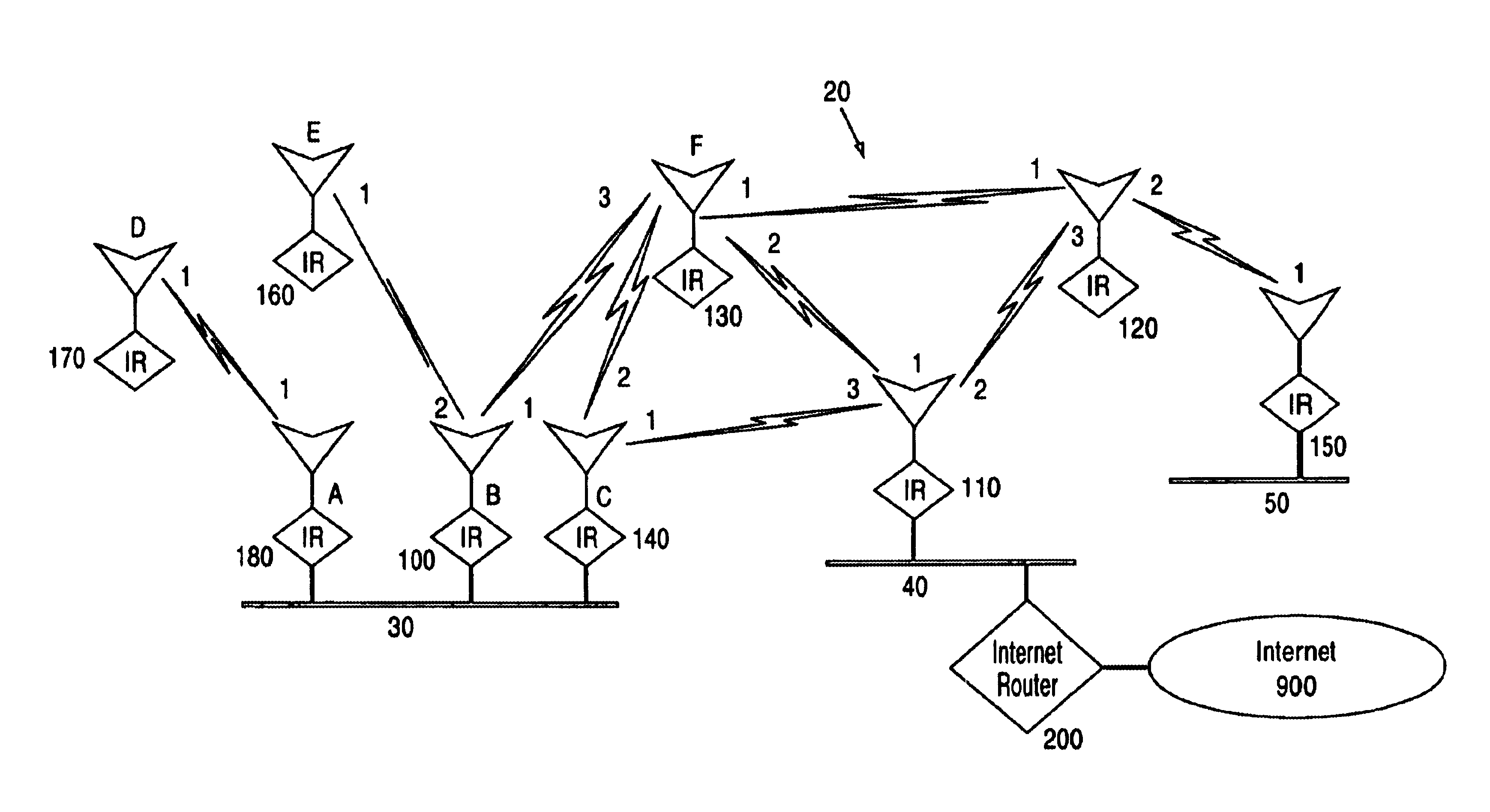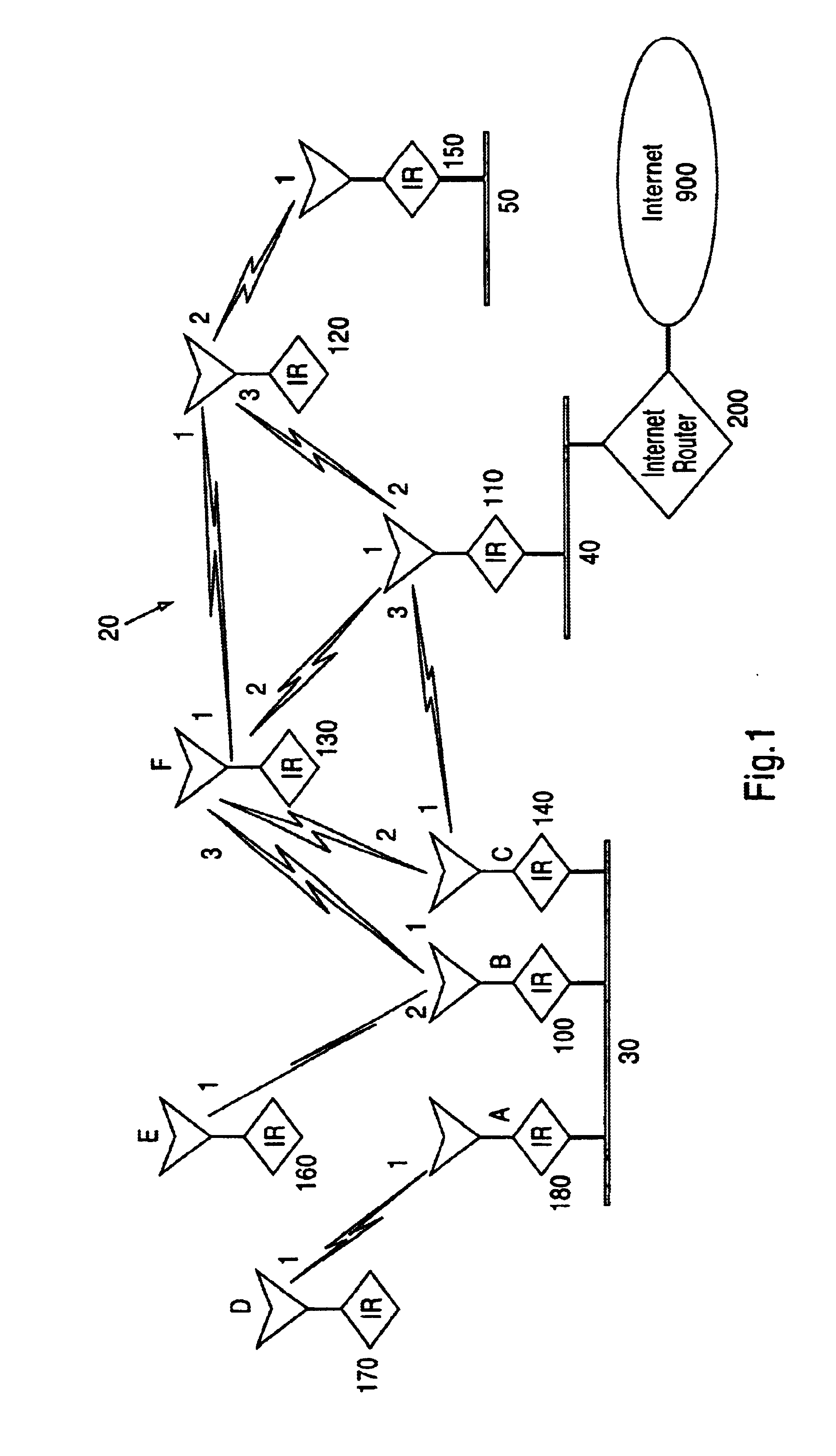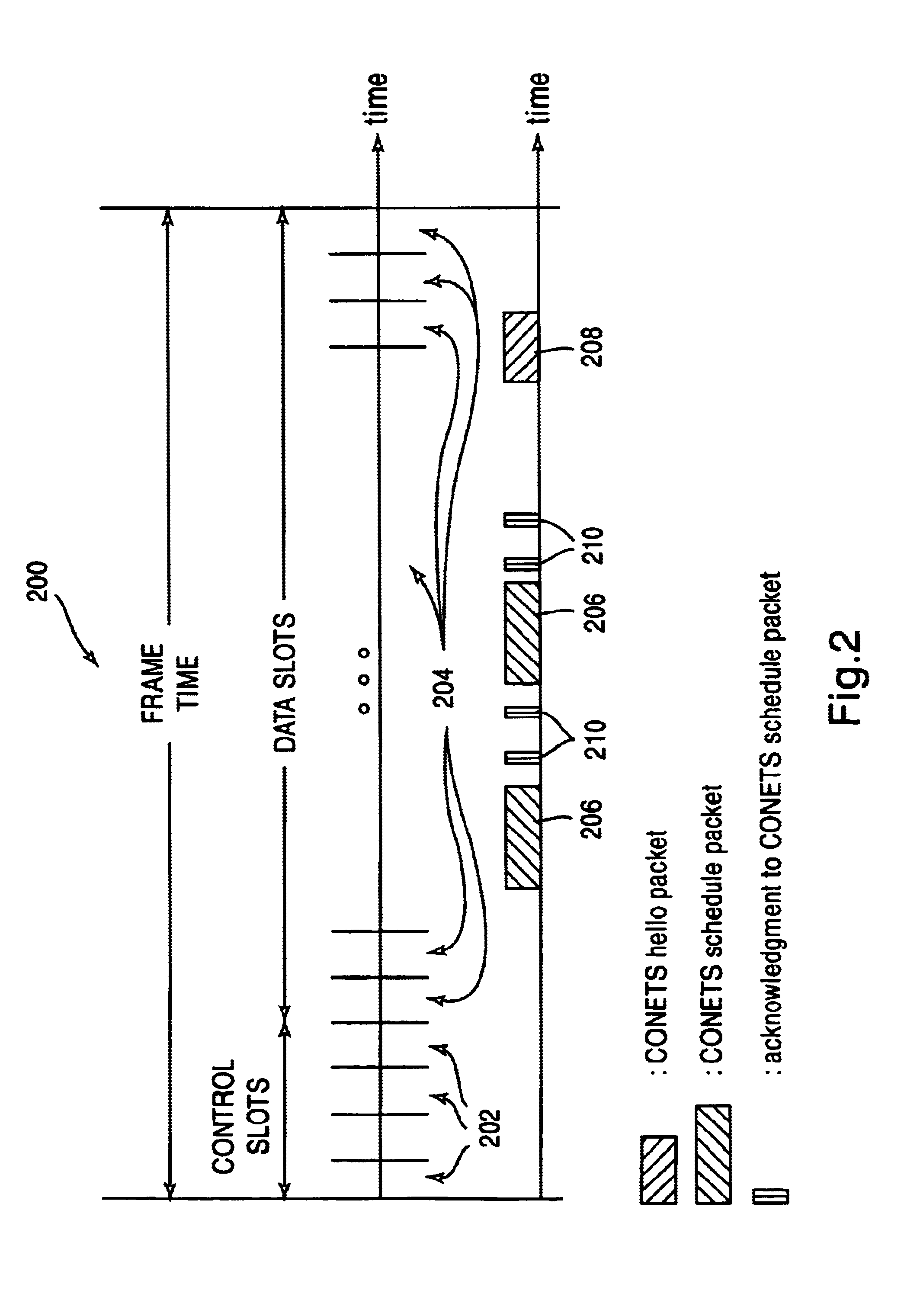Transmission-scheduling coordination among collocated internet radios
a technology of internet radio and transmission schedule, applied in the field of transmission schedule, can solve the problems of inability to adapt to network changes, lack of explicit support of collision-free multicasting or broadcasting, and inability to provide channel access delay guarantees
- Summary
- Abstract
- Description
- Claims
- Application Information
AI Technical Summary
Benefits of technology
Problems solved by technology
Method used
Image
Examples
Embodiment Construction
[0024]A system for the establishment of a common schedule among collocated nodes for collision-free unicast, multicast, and broadcast transmissions in ad hoc networks according to an embodiment of the invention is disclosed herein. In the following description, numerous specific details are set to provide a thorough understanding of the present invention. However, it will be evident to those skilled in the art that these specific details need not be used to practice the present invention and alternative embodiments are possible. In other cases, well-known structures and circuitry have not been shown in detail to avoid unnecessarily obscuring the present invention.
[0025]The present scheduling protocol disclosed according to an embodiment will be referred to as the Neighborhood Established Transmission Scheduling (CONETS) protocol, because it enables all nodes that are members of an ad hoc network and collocated over a wired link or local area network (LAN) to obtain the exact same tr...
PUM
 Login to View More
Login to View More Abstract
Description
Claims
Application Information
 Login to View More
Login to View More - R&D
- Intellectual Property
- Life Sciences
- Materials
- Tech Scout
- Unparalleled Data Quality
- Higher Quality Content
- 60% Fewer Hallucinations
Browse by: Latest US Patents, China's latest patents, Technical Efficacy Thesaurus, Application Domain, Technology Topic, Popular Technical Reports.
© 2025 PatSnap. All rights reserved.Legal|Privacy policy|Modern Slavery Act Transparency Statement|Sitemap|About US| Contact US: help@patsnap.com



